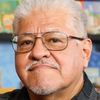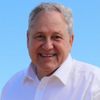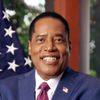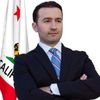Governor of California
| California Governor | |
 | |
| General information | |
| Office Type: | Partisan |
| Office website: | Official Link |
| Compensation: | $224,020 |
| 2025 FY Budget: | $32,475,000 |
| Term limits: | 2 terms |
| Structure | |
| Length of term: | 4 years |
| Authority: | California Constitution, Article 5, Section 1 |
| Selection Method: | Elected |
| Current Officeholder(s) | |
Governor of California
Gavin Newsom | |
| Elections | |
| Next election: | November 3, 2026 |
| Last election: | November 8, 2022 |
| Other California Executive Offices | |
| Governor • Lieutenant Governor • Secretary of State • Attorney General • Treasurer • Auditor • Controller • Superintendent of Public Instruction • Agriculture Secretary • Insurance Commissioner • Natural Resources Secretary • Industrial Relations Director • Public Utilities Commission | |
The Governor of California is an elected constitutional officer, the head of the executive branch and the highest state office in California. The governor is popularly elected every four years by a plurality and is limited to two terms. The office of governor was first established in 1849, replacing the succession of military governors that had overseen the territory since its annexation the previous year.
California has a Democratic trifecta. The Democratic Party controls the office of governor and both chambers of the state legislature.
California has a Democratic triplex. The Democratic Party controls the offices of governor, secretary of state, and attorney general.
Current officeholder
The current Governor of California is Gavin Newsom (D). Newsom assumed office in 2019.
Authority
The Constitution of California establishes the office of governor in Article V, the Executive.
California Constitution, Article 5, Section 1
|
The supreme executive power of this State is vested in the Governor.[1] |
Qualifications
| State Executives |
|---|
| Current Governors |
| Gubernatorial Elections |
| 2025 • 2024 • 2023 • 2022 • 2021 • 2020 • 2019 • 2018 • 2017 • 2016 • 2015 • 2014 |
| Current Lt. Governors |
| Lt. Governor Elections |
| 2025 • 2024 • 2023 • 2022 • 2021 • 2020 • 2019 • 2018 • 2017 • 2016 • 2015 • 2014 |
The governor may not hold any other public offices, engage in any lobbying or accept any honorariums. Additionally, he or she must be a registered voter in California, a resident of the state for at least five years on election day and an American citizen for at least five years. As of July 2021, the California Secretary of State's office considered the five-year state residency requirement to run for political office to be in violation of the U.S. Constitution and required only that candidates hold U.S. citizenship.[2]
California Constitution, Article 5, Section 2
|
[...] The Governor shall be an elector who has been a citizen of the United States and a resident of this State for 5 years immediately preceding the Governor's election. The Governor may not hold other public office.[1] |
Elections
California elects governors in federal midterm election years, e.g. 2018, 2022, 2026, 2030 and 2034. The gubernatorial inauguration is always set for the first Monday in the new year following the election.
California Constitution, Article 5, Section 2
|
The Governor shall be elected every fourth year at the same time and places as members of the Assembly and hold office from the Monday after January 1 following the election until a successor qualifies.[1] |
As in several other states, governors may be subject to recall elections. To initiate a recall, citizens must submit petitions signed by California voters equal in number to 12 percent of the last vote for the office of governor. Additionally, petitioners must collect signatures from each of five counties equal in number to 1 percent of the last vote for governor in the county. The most recent California gubernatorial recall election saw Gavin Newsom retain his position.
Term limits
- See also: States with gubernatorial term limits
California governors are restricted to two terms in office during their lifetime.
California Constitution, Article V, Section 2
| No Governor may serve more than 2 terms.[1] |
Partisan composition
The chart below shows the partisan breakdown of California governors from 1992 to 2013.
2022
- See also: California gubernatorial election, 2022
General election
General election for Governor of California
Incumbent Gavin Newsom defeated Brian Dahle in the general election for Governor of California on November 8, 2022.
Candidate | % | Votes | ||
| ✔ |  | Gavin Newsom (D) | 59.2 | 6,470,104 |
 | Brian Dahle (R) | 40.8 | 4,462,914 | |
| Total votes: 10,933,018 | ||||
 = candidate completed the Ballotpedia Candidate Connection survey. = candidate completed the Ballotpedia Candidate Connection survey. | ||||
| If you are a candidate and would like to tell readers and voters more about why they should vote for you, complete the Ballotpedia Candidate Connection Survey. | ||||
Do you want a spreadsheet of this type of data? Contact our sales team. | ||||
Nonpartisan primary election
Nonpartisan primary for Governor of California
The following candidates ran in the primary for Governor of California on June 7, 2022.
Candidate | % | Votes | ||
| ✔ |  | Gavin Newsom (D) | 55.9 | 3,945,748 |
| ✔ |  | Brian Dahle (R) | 17.7 | 1,252,800 |
 | Michael Shellenberger (Independent)  | 4.1 | 290,286 | |
 | Jenny Rae Le Roux (R) | 3.5 | 246,665 | |
 | Anthony Trimino (R)  | 3.5 | 246,322 | |
 | Shawn Collins (R)  | 2.5 | 173,083 | |
 | Luis Rodriguez (G)  | 1.8 | 124,672 | |
 | Leo Zacky (R) | 1.3 | 94,521 | |
 | Major Williams (R)  | 1.3 | 92,580 | |
 | Robert Newman (R) | 1.2 | 82,849 | |
 | Joel Ventresca (D) | 0.9 | 66,885 | |
 | David Lozano (R)  | 0.9 | 66,542 | |
| Ronald Anderson (R) | 0.8 | 53,554 | ||
 | Reinette Senum (Independent)  | 0.8 | 53,015 | |
 | Armando Perez-Serrato (D) | 0.6 | 45,474 | |
 | Ron Jones (R) | 0.5 | 38,337 | |
 | Daniel Mercuri (R) | 0.5 | 36,396 | |
 | Heather Collins (G) | 0.4 | 29,690 | |
 | Anthony Fanara (D)  | 0.4 | 25,086 | |
 | Cristian Morales (R)  | 0.3 | 22,304 | |
 | Lonnie Sortor (R)  | 0.3 | 21,044 | |
 | Frederic Schultz (Independent)  | 0.2 | 17,502 | |
 | Woodrow Sanders III (Independent) | 0.2 | 16,204 | |
 | James Hanink (Independent) | 0.1 | 10,110 | |
 | Serge Fiankan (Independent)  | 0.1 | 6,201 | |
 | Bradley Zink (Independent)  | 0.1 | 5,997 | |
| Jeff Scott (American Independent Party of California) (Write-in) | 0.0 | 13 | ||
| Gurinder Bhangoo (R) (Write-in) | 0.0 | 8 | ||
| Total votes: 7,063,888 | ||||
 = candidate completed the Ballotpedia Candidate Connection survey. = candidate completed the Ballotpedia Candidate Connection survey. | ||||
| If you are a candidate and would like to tell readers and voters more about why they should vote for you, complete the Ballotpedia Candidate Connection Survey. | ||||
Do you want a spreadsheet of this type of data? Contact our sales team. | ||||
Withdrawn or disqualified candidates
- Errol Webber (R)
- Laura Smith (R)
- Chaz Flemmings (Independent)
- John Drake (D)
- Mohammad Arif (D)
- Hilaire Shioura (Independent)
2021
Gavin Newsom yes/no recall question
Gavin Newsom recall, 2021
Gavin Newsom won the Governor of California recall election on September 14, 2021.
Recall Vote |
% |
Votes |
|||
Yes |
38.1
|
4,894,473 | |||
| ✔ | No |
61.9
|
7,944,092 | ||
Total Votes |
12,838,565 | ||||
|
|
Gavin Newsom replacement question
General election
Special general election for Governor of California
The following candidates ran in the special general election for Governor of California on September 14, 2021.
Candidate | % | Votes | ||
 | Larry Elder (R) | 48.4 | 3,563,867 | |
 | Kevin Paffrath (D)  | 9.6 | 706,778 | |
 | Kevin Faulconer (R) | 8.0 | 590,346 | |
 | Brandon Ross (D)  | 5.3 | 392,029 | |
 | John Cox (R) | 4.1 | 305,095 | |
 | Kevin Kiley (R) | 3.5 | 255,490 | |
 | Jacqueline McGowan (D) | 2.9 | 214,242 | |
 | Joel Ventresca (D)  | 2.5 | 186,345 | |
 | Daniel Watts (D)  | 2.3 | 167,355 | |
 | Holly Baade (D)  | 1.3 | 92,218 | |
 | Patrick Kilpatrick (D)  | 1.2 | 86,617 | |
 | Armando Perez-Serrato (D) | 1.2 | 85,061 | |
 | Caitlyn Jenner (R) | 1.0 | 75,215 | |
 | John Drake (D)  | 0.9 | 68,545 | |
 | Daniel Kapelovitz (G) | 0.9 | 64,375 | |
 | Jeff Hewitt (L) | 0.7 | 50,378 | |
 | Ted Gaines (R)  | 0.7 | 47,937 | |
 | Angelyne (No party preference) | 0.5 | 35,900 | |
 | David Moore (No party preference) | 0.4 | 31,224 | |
 | Anthony Trimino (R) | 0.4 | 28,101 | |
 | Doug Ose (R) (Unofficially withdrew) | 0.4 | 26,204 | |
 | Michael Loebs (No party preference)  | 0.3 | 25,468 | |
 | Heather Collins (G) | 0.3 | 24,260 | |
 | Major Singh (No party preference) | 0.3 | 21,394 | |
 | David Lozano (R) | 0.3 | 19,945 | |
 | Denver Stoner (R)  | 0.3 | 19,588 | |
 | Samuel Gallucci (R) | 0.2 | 18,134 | |
 | Steven Chavez Lodge (R) | 0.2 | 17,435 | |
 | Jenny Rae Le Roux (R)  | 0.2 | 16,032 | |
 | David Bramante (R)  | 0.2 | 11,501 | |
 | Diego Martinez (R)  | 0.1 | 10,860 | |
 | Robert Newman (R)  | 0.1 | 10,602 | |
 | Sarah Stephens (R) | 0.1 | 10,583 | |
 | Dennis Richter (No party preference)  | 0.1 | 10,468 | |
 | Major Williams (R) (Write-in) | 0.1 | 8,965 | |
 | Denis Lucey (No party preference)  | 0.1 | 8,182 | |
 | James Hanink (No party preference)  | 0.1 | 7,193 | |
 | Daniel Mercuri (R) | 0.1 | 7,110 | |
 | Chauncey Killens (R)  | 0.1 | 6,879 | |
 | Leo Zacky (R) | 0.1 | 6,099 | |
 | Kevin Kaul (No party preference) | 0.1 | 5,600 | |
 | David Hillberg (R)  | 0.1 | 4,435 | |
 | Adam Papagan (No party preference)  | 0.1 | 4,021 | |
 | Rhonda Furin (R) | 0.1 | 3,964 | |
 | Nickolas Wildstar (R)  | 0.1 | 3,811 | |
 | Jeremiah Marciniak (No party preference)  | 0.0 | 2,894 | |
 | Joe Symmon (R)  | 0.0 | 2,397 | |
| Miki Habryn (No party preference) (Write-in) | 0.0 | 137 | ||
| Roxanne (D) (Write-in) | 0.0 | 116 | ||
| Stacy Smith (D) (Write-in) | 0.0 | 81 | ||
Vivek Mohan (No party preference) (Write-in)  | 0.0 | 68 | ||
| Thuy Hugens (American Independent Party of California) (Write-in) | 0.0 | 19 | ||
| Vince Lundgren (No party preference) (Write-in) | 0.0 | 5 | ||
Vote totals may be incomplete for this race. | ||||
| Total votes: 7,361,568 | ||||
 = candidate completed the Ballotpedia Candidate Connection survey. = candidate completed the Ballotpedia Candidate Connection survey. | ||||
| If you are a candidate and would like to tell readers and voters more about why they should vote for you, complete the Ballotpedia Candidate Connection Survey. | ||||
Do you want a spreadsheet of this type of data? Contact our sales team. | ||||
Withdrawn or disqualified candidates
- Karen Blake (R)
- Mariana Dawson (No party preference)
- Veronika Fimbres (G)
- Elizabeth Floyd (No party preference)
- Wayne Frazier (R)
- Timothy Herode (R)
- Luis Huang (D)
- Jimih Jones (R)
- Paul Mesrop Kurdian (No party preference)
- Carla Canada (No party preference)
- Mary Cook (No party preference)
- Torr Leonard (D)
- Jeremy Lupoli (D)
- Louis J. Marinelli, III (R)
- Christopher Mason (R)
- John Pierce (R)
- Patrick Rakus Jr. (R)
- Frank Wade (D)
- Marc Roth (No party preference)
- Christopher Carlson (G)
- Douglas Deitch (D)
- Bryan Farley (D)
- Justin Hubbard (R)
- Jason Dixon (D)
- Sean Harrison (R)
- Ronald Palmieri (D)
- Ben Zandpour (No party preference)
- Robert Davidson Griffis (D)
- A. Shantz (G)
- Adam Hadjinian (No party preference)
- Michael Lynn Gabriel (No party preference)
- Hilaire Shioura (No party preference)
- Lee Olson (No party preference)
- Joseph Luciano (R)
- Steven Fitzgerald (R)
- Anthony Fanara (D)
- Jemiss Nazar (No party preference)
- Kevin Abushi (R)
- Joseph Amey (American Independent Party of California)
Past elections
Vacancies
- See also: How gubernatorial vacancies are filled
Article 5, Section 10 of the state constitution requires the Lieutenant Governor of California to assume the office of governor if the incumbent is unable to discharge the office. The legislature sets the rest of the order of precedence for filling vacancies in the office of governor. Disputes over the line of succession are under the sole jurisdiction of the California Supreme Court.
Duties
The governor has the power to veto bills from the California State Legislature. The legislature can override a veto by a two-thirds majority vote in both the state assembly and the state senate. The governor can veto particular items from an appropriations bill while leaving others intact.
Law-enforcement powers include the ability to grant pardons and commute sentences, excepting cases of impeachment, as well as serving as the commander-in-chief of the state militia. In addition to calling the National Guard into active duty, the governor can call the California State Military Reserve to active duty to support guardsmen.
The governor also has full membership and voting powers to the Regents of the University of California, the governing board of the University of California system, along with other elected officials, and a majority of members on the Regents of the University of California are appointed by the governor.
Each year, the governor must make a "State of the State" address to the legislature. He or she may also order reports and information from other state officers.
Unless otherwise provided by law, the governor fills vacancies in all state offices. Specifically, vacancies in the offices of state school superintendent, the lieutenant governor, secretary of state, state controller, state treasurer, attorney general and on the State Board of Equalization are filled by a gubernatorial nominee with state senate confirmation.
Divisions
- Updated January 14, 2021
- Accounting
- Advance
- Appointments
- Business Affairs
- Chief of Staff Office
- Constituent Affairs & Mailroom
- Executive Office
- External Affairs
- Information Technology
- Judicial Appointments
- Legal Affairs
- Legislative Affairs
- Operations
- Paroles/Extraditions/Commutations
- Partnerships & Civic Engagement
- Personnel
- Public Affairs
- Digital
- Writing & Research
- Reception
- Scheduling
- Social Innovation[3]
State budget
Role in state budget
- See also: California state budget and finances
The state operates on an annual budget cycle. The sequence of key events in the budget process is as follows:[4]
- Budget instructions are sent to state agencies beginning in April.
- Agencies submit their budget requests to the governor in September.
- The governor submits his or her proposed budget to the state legislature in January.
- The legislature adopts a budget in June. A majority is required to pass a budget. The fiscal year begins July 1.
California is one of 44 states in which the governor has line item veto authority.[4][5]
The governor is required to submit a balanced budget to the legislature. In turn, the legislature is required to adopt a balanced budget.[4]
Governor's office budget
The budget for the California Governor's Office in the 2024-2025 Fiscal Year was $32,475,000.[6]
Compensation
The salaries of California's elected executives are determined by the California Citizens Compensation Commission, a seven-member board appointed by the governor to six-year terms. The commission was established after voters passed Proposition 112, an amendment to the California Constitution, in 1990. Commissioners meet prior to June 30 of each year to determine salary recommendations with changes effective the following December. From 2001 to 2013, the commission voted to increase salaries or benefits five times and decreased or made no changes to salaries eight times.[7]
2023
In 2023, the officer's salary was $224,020, according to the Council of State Governments.[8]
2022
In 2022, the officer's salary was $218,556, according to the Council of State Governments.[9]
2021
In 2021, the governor received a salary of $209,747, according to the Council of State Governments.[10]
2020
In 2020, the governor's salary was increased to $209,747, according to the Council of State Governments.[11]
2019
In 2019, the governor's salary was increased to $201,680, according to the Council of State Governments.[12]
2018
In 2018, the governor's salary was increased to $195,806, according to the Council of State Governments.[13]
2017
In 2017, the governor's salary was increased to $190,103, according to the Council of State Governments.[14]
2016
In 2016, the governor's salary was increased to $182,791, according to the Council of State Governments.[15]
2015
In 2015, the governor's salary was increased to $177,467, according to the Council of State Governments.[16]
2014
In 2014, the governor received a salary of $173,987, according to the Council of State Governments.[17]
2013
In 2013, the governor received a salary of $173,987, according to the Council of State Governments.[18]
2010
In 2010, the governor received a salary of $173,987, according to the Council of State Governments.[19]
Historical officeholders
There have been 40 governors of California since 1849. Of the 40 officeholders, 20 were Republican, 16 were Democratic, two were Independent Democrat, one was Union, and one was American Know-Nothing.[20]
| # | Name | Term |
|---|---|---|
| 1 | Peter H. Burnett (D) | December 20, 1849-January 9, 1851 |
| 2 | John McDougal (D) | January 9, 1851-January 8, 1852 |
| 3 | John Bigler (D) | January 8, 1852-January 9, 1856 |
| 4 | John N. Johnson (Know-Nothing) | January 9, 1856-January 8, 1858 |
| 5 | John B. Weller (D) | January 8, 1858-January 9, 1860 |
| 6 | Milton S. Latham (D) | January 9, 1860-January 14, 1860 |
| 7 | John G. Downey (D) | January 14, 1860-January 10, 1862 |
| 8 | Leland Stanford (R) | January 10, 1862-December 10, 1863 |
| 9 | Frederick F. Low (Union) | December 10, 1863-December 5, 1867 |
| 10 | Henry H. Haight | December 5, 1867-December 8, 1871 |
| 11 | Newton Booth (R) | December 8, 1871-February 27, 1875 |
| 12 | Romualdo Pacheo (R) | February 27, 1875-December 9, 1875 |
| 13 | William Irwin (D) | December 9, 1875-January 8, 1880 |
| 14 | George C. Perkins (R) | January 10, 1880-January 10, 1883 |
| 15 | George Stoneman (D) | January 10, 1883-January 8, 1887 |
| 16 | Washington Bartlett (D) | January 8, 1887-September 12, 1887 |
| 17 | Robert W. Waterman (R) | September 12, 1887-January 8, 1891 |
| 18 | Henry H. Markham (R) | January 8, 1891-January 11, 1895 |
| 19 | James H. Budd (D) | January 11, 1895-January 4, 1899 |
| 20 | Henry T. Gage (R) | January 4, 1899-January 7, 1903 |
| 21 | George C. Pardee (R) | January 7, 1903-January 9, 1907 |
| 22 | James N. Gillett (R) | January 9, 1907-January 3, 1911 |
| 23 | Hiram Johnson (Republican, Progressive) | January 3, 1911-March 15, 1917 |
| 24 | William D. Stephens (R) | March 15, 1917-January 8, 1923 |
| 25 | Friend William Richardson (R) | January 8, 1923-January 4, 1927 |
| 26 | Clement C. Young (R) | January 4, 1927-January 8, 1931 |
| 27 | James Rolph (R) | January 8, 1931-June 2, 1934 |
| 28 | Frank F. Merriam (R) | June 2, 1934-January 2, 1939 |
| 29 | Culbert L. Olson (D) | January 2, 1939-January 4, 1943 |
| 30 | Earl Warren (R) | January 4, 1943-October 5, 1953 |
| 31 | Goodwin J. Knight (R) | October 5, 1953-January 5, 1959 |
| 32 | Pat Brown (D) | January 5, 1959-January 2, 1967 |
| 33 | Ronald Reagan (R) | January 2, 1967-January 6, 1975 |
| 34 | Jerry Brown (D) | January 5, 1975-January 4, 1983 |
| 35 | George Deukmejian (R) | January 3, 1983-January 7, 1991 |
| 36 | Pete Wilson (R) | January 7, 1991-January 4, 1999 |
| 37 | Gray Davis (D) | January 4, 1999-November 17, 2003 |
| 38 | Arnold Schwarzenegger (R) | November 17, 2003-January 3, 2011 |
| 39 | Jerry Brown (D) | January 3, 2011-2019 |
| 40 | Gavin Newsom (D) | January 7, 2019-present |
Noteworthy events
2025: Recall effort starts against Governor Newsom
An effort to recall California Governor Gavin Newsom (D) began on March 28, 2025. Supporters of the recall have 160 days—or no later than September 4, 2025—to collect 1,311,963 signatures to require a recall election.[21]
Proponents of the recall effort criticize Governor Newsom for his handling of the Los Angeles County fires, the rising cost of living—including gas, electricity, and insurance—along with concerns about crime rates, homelessness, the drug epidemic, and border-related issues.[22]
The recall petition includes the following statement from Governor Newsom in response to the recall effort:[23]
| “ |
The same MAGA extremists are back with another wasteful partisan recall against Governor Gavin Newsom. This time they've sunk to a new low — exploiting the victims of the LA fires for political gain and distracting us all from the urgent work of recovery and rebuilding. Here's the worst part: Their partisan recall will waste 200 million taxpayer dollars desperately needed for emergency preparedness and response. Governor Newsom has made it clear that he won't play partisan politics with disasters—his focus is on saving lives and helping families recover. And here's the real story. No governor in history has made greater investments in fire preparedness. Newsom doubled the number of state firefighters in the field and literally built the airforce of fire-fighting planes and helicopters that put out the LA fires and saved entire neighborhoods. At the same time, Newsom has put California at the forefront in addressing climate change—the root cause of many of the extreme weather events threatening the state and the world. Governor Newsom will continue to put politics aside to protect California and deliver for people. Reject this wasteful partisan recall. /s/ Governor Gavin Newsom[24] |
” |
2024: Recall effort against Governor Newsom fails to submit signatures
An effort to recall California Gov. Gavin Newsom (D) was launched in February 2024. The California Secretary of State's office approved the recall for circulation on March 26, 2024. Supporters of the recall had 160 days—or no later than September 3, 2024[25]—to collect 1,311,963 signatures to require a recall election.[21] No signatures were submitted by the deadline.[26]
2021: Governor Newsom retained by voters in recall election
California Gov. Gavin Newsom (D) was retained in a recall election on September 14, 2021. Newsom was retained 61.9% to 38.1%. Roughly 12.8 million voters participated in the election. To see the results of the replacement candidate question, click here.[27]
Voters had to decide two questions: whether Newsom should be recalled and, if so, who should replace him. A majority vote was required on the first question for the governor to be recalled. If Newsom had been recalled, the candidate with the most votes on the second question would have won the election, no majority required.[28]
Forty-six candidates, including nine Democrats and 24 Republicans, ran in the election. Approximately 7.4 million voters selected a candidate on the second question. The five candidates to receive the most votes were: radio host Larry Elder (R) with 48.4%, YouTuber Kevin Paffrath (D) with 9.6%, former San Diego Mayor Kevin Faulconer (R) with 8.0%, doctor Brandon Ross (D) with 5.3%, and 2018 gubernatorial candidate John Cox (R) with 4.1%. Eight other candidates received at least 1% of the vote.
Recall supporters said Newsom mishandled the state's response to the coronavirus pandemic, did not do enough to address the state's homelessness rate, and supported sanctuary city policies and water rationing.[29] Newsom called the effort a "Republican recall — backed by the RNC, anti-mask and anti-vax extremists, and pro-Trump forces who want to overturn the last election and have opposed much of what we have done to fight the pandemic."[30] Newsom was elected governor in 2018, defeating Cox 61.9% to 38.1%.
There have been 55 attempts to recall a governor since California adopted the process in 1911. The only successful effort was in 2003 when voters recalled then-Gov. Gray Davis (D). Arnold Schwarzenegger (R) was elected as Davis' replacement.[31][32] In that election, 135 candidates ran and the winner received 48.6% of the vote.
History
Partisan balance 1992-2013
From 1992-2013, there were Democratic governors in office for eight years while there were Republican governors in office for 14 years. During the final three years of the study, California was under Democratic trifectas.
Across the country, there were 493 years of Democratic governors (44.82%) and 586 years of Republican governors (53.27%) from 1992 to 2013.
Over the course of the 22-year study, state governments became increasingly more partisan. At the outset of the study period (1992), 18 of the 49 states with partisan legislatures had single-party trifectas and 31 states had divided governments. In 2013, only 13 states had divided governments, while single-party trifectas held sway in 36 states, the most in the 22 years studied.
The chart below shows the partisan composition of the Office of the Governor of California, the California State Senate and the California House of Representatives from 1992 to 2013.
SQLI and partisanship
The chart below depicts the partisanship of the California state government and the state's SQLI ranking for the years studied. For the SQLI, the states were ranked from 1-50, with 1 being the best and 50 the worst. California has never had a Republican trifecta, but did have Democratic trifectas between the years 1999 and 2003 and again after 2010 to the present. California fell steadily in the SQLI ranking until finally reaching the bottom-10 in 2010. The state reached its highest ranking (28th) in 1998 and 1999, first under divided government and then under a Democratic trifecta. The state’s lowest ranking (48th) occurred recently in 2012 under a Democratic trifecta. Except for the years 1995 and 1996, the California legislature has been consistently under Democratic control.
- SQLI average with Democratic trifecta: 37.00
- SQLI average with Republican trifecta: N/A
- SQLI average with divided government: 35.21
State profile
| Demographic data for California | ||
|---|---|---|
| California | U.S. | |
| Total population: | 38,993,940 | 316,515,021 |
| Land area (sq mi): | 155,779 | 3,531,905 |
| Race and ethnicity** | ||
| White: | 61.8% | 73.6% |
| Black/African American: | 5.9% | 12.6% |
| Asian: | 13.7% | 5.1% |
| Native American: | 0.7% | 0.8% |
| Pacific Islander: | 0.4% | 0.2% |
| Two or more: | 4.5% | 3% |
| Hispanic/Latino: | 38.4% | 17.1% |
| Education | ||
| High school graduation rate: | 81.8% | 86.7% |
| College graduation rate: | 31.4% | 29.8% |
| Income | ||
| Median household income: | $61,818 | $53,889 |
| Persons below poverty level: | 18.2% | 11.3% |
| Source: U.S. Census Bureau, "American Community Survey" (5-year estimates 2010-2015) Click here for more information on the 2020 census and here for more on its impact on the redistricting process in California. **Note: Percentages for race and ethnicity may add up to more than 100 percent because respondents may report more than one race and the Hispanic/Latino ethnicity may be selected in conjunction with any race. Read more about race and ethnicity in the census here. | ||
Presidential voting pattern
- See also: Presidential voting trends in California
California voted for the Democratic candidate in all seven presidential elections between 2000 and 2024.
More California coverage on Ballotpedia
- Elections in California
- United States congressional delegations from California
- Public policy in California
- Endorsers in California
- California fact checks
- More...
Contact information
Physical address:
1303 10th Street, Suite 1173
Sacramento, CA 95814
Phone: 916-445-2841
Fax: 916-558-3160
See also
| California | State Executive Elections | News and Analysis |
|---|---|---|
|
|
|
|
External links
- Search Google News for this topic
- Official site of Governor's office
- Official California Secretary of State Election and Voter Information site
Footnotes
- ↑ 1.0 1.1 1.2 1.3 California Legislative Information, "California Constitution," accessed January 14, 2021
- ↑ California Secretary of State, "Summary of Qualifications and Requirements for the Office of Governor," accessed July 6, 2021
- ↑ California State Government, "Organizational Chart," accessed January 14, 2021
- ↑ 4.0 4.1 4.2 National Association of State Budget Officers, "Budget Processes in the States, Spring 2021," accessed January 24, 2023
- ↑ National Conference of State Legislatures, "Separation of Powers: Executive Veto Powers," accessed January 26, 2024
- ↑ California Budget, "2024-25 Budget - 0500 Governor's Office," accessed January 15, 2025
- ↑ California Citizens Compensation Commission, "About the Commission," accessed January 14, 2021
- ↑ Council of State Governments, "Book of the States 2023 Table 4.11: Selected State Administrative Officials: Annual Salaries," accessed January 15, 2025
- ↑ Council of State Governments, "Book of the States 2022 Table 4.11: Selected State Administrative Officials: Annual Salaries," provided to Ballotpedia by CSG personnel
- ↑ Issuu, "The Book of the States 2021," accessed September 22, 2022
- ↑ Council of State Governments, "Selected State Administrative Officials: Annual Salaries, 2020," accessed January 14, 2021
- ↑ Council of State Governments, "Selected State Administrative Officials: Annual Salaries, 2019," accessed January 14, 2021
- ↑ Council of State Governments, "Selected State Administrative Officials: Annual Salaries, 2018," accessed January 14, 2021
- ↑ Council of State Governments, "Selected State Administrative Officials: Annual Salaries, 2017," accessed January 14, 2021
- ↑ Council of State Governments, "Selected State Administrative Officials: Annual Salaries, 2016," accessed January 14, 2021
- ↑ Council of State Governments, "Selected State Administrative Officials: Annual Salaries, 2015," accessed January 14, 2021
- ↑ Council of State Governments, "Selected State Administrative Officials: Annual Salaries," accessed January 14, 2021
- ↑ Council of State Governments, "CSG Releases 2013 Governor Salaries," January 14, 2021
- ↑ Council of State Governments, "Book of the States 2010 -- Table 4.11," accessed January 14, 2021
- ↑ National Governors Association, "Former California Governors," accessed January 14, 2021
- ↑ 21.0 21.1 California Secretary of State, "County Clerk/Registrar of Voters (CC/ROV) Memorandum #25024," accessed April 4, 2025 Cite error: Invalid
<ref>tag; name "sos" defined multiple times with different content - ↑ California Globe, "Gavin Newsom Recall Petition Approved For Signature Gathering," March 31, 2025
- ↑ Saving California, "Saving California Petition April 2025," accessed April 4, 2025
- ↑ Note: This text is quoted verbatim from the original source. Any inconsistencies are attributable to the original source.
- ↑ The deadline for the recall was moved from September 2 to September 3 due to the observance of a state holiday.
- ↑ Sacramento Bee, "Latest effort to recall Gavin Newsom as CA governor fails," September 3, 2024
- ↑ CNN, "Election to recall California Gov. Gavin Newsom set for September 14," July 1, 2021
- ↑ Cal Matters, "Recalling a California governor, explained," January 27, 2021
- ↑ NBC News, "Recall effort against California governor an attempt to 'destabilize the political system,' analysts say," December 20, 2020
- ↑ Los Angeles Times, "Gavin Newsom and Democrats are dragging Donald Trump into the recall fight," March 16, 2021
- ↑ California Secretary of State, "Complete List of Recall Attempts," accessed November 16, 2020
- ↑ San Francisco Chronicle, "Recall Gavin Newsom? The time is right, GOP activists say," November 26, 2019
| ||||||||||||||||
 |
State of California Sacramento (capital) |
|---|---|
| Elections |
What's on my ballot? | Elections in 2025 | How to vote | How to run for office | Ballot measures |
| Government |
Who represents me? | U.S. President | U.S. Congress | Federal courts | State executives | State legislature | State and local courts | Counties | Cities | School districts | Public policy |































